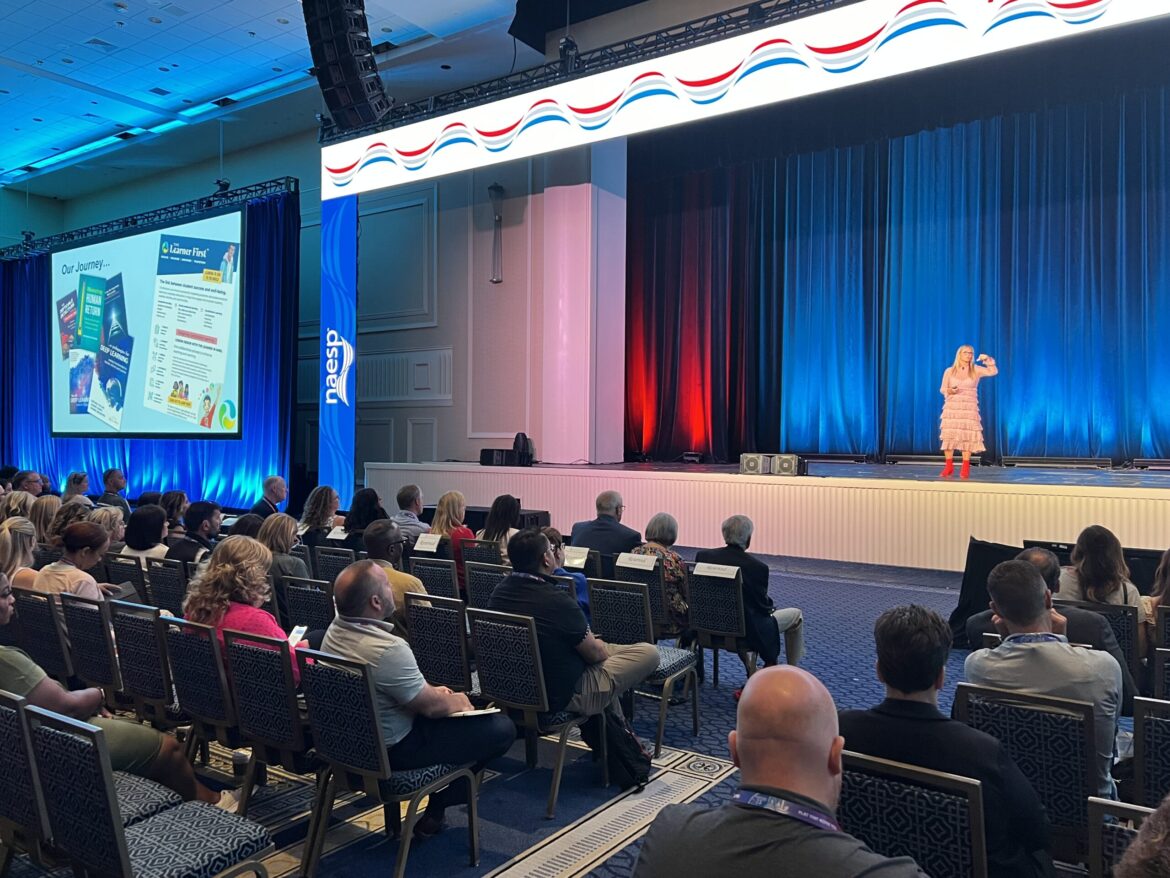Cultivating an Inclusive, Welcoming School Community for All
Joanne McEachen focused on inclusion in her keynote address, encouraging school leaders to break the mold on what's been done before to meet students' new needs.

What were the speaker’s main messages?
Our kids are telling us that school is not meeting their needs anymore. They want to change the world. Instead of us all doing things separately, why not figure it out together? So much adult time is spent figuring out curriculum, standards, and so on. If we work together and learn from one another on a global scale, we can then spend our time getting to know kids and helping them learn who they are, how they fit in the world, and how they can contribute to that call to action.
What were some of the speaker’s best quotes?
Learn and don’t stop learning. Everything is consistently moving. Do something different and a bit exciting. Be brave. Every year, do something that breaks the mold of what’s done.
What were the top ideas from the session?
- From Antonio Guterres, Secretary-General of the United Nations (2022): “Four key purposes of learning: learning to learn, learning to live together, learning to do, learning to be.” With this in mind, how far away from that are we?
- Kids know who they are, often, but aren’t always able to express it within the structure/systems that exist in our schools. We need to create a space for students to figure out who they are and where they’re free to be who they are.
- It’s OK to have tests, but a test is not enough to make a judgment on a child’s growth, potential, or identity. Self-assessment is the purest form of assessment, as how the students see themselves is critical.
What is one strategy that you will implement immediately?
Build systems for students to provide input and share their voices about what’s relevant to them so that staff can intentionally look for ways to make learning (and school in general) relevant to them.
What is one strategy that will help you with instructional leadership?
In thinking about curriculum and other aspects where instruction, take and synthesize the best practices, resources, and research, feed it back to educators, and get feedback from them. We can take the heavy lifting off of staff members by collaborating with other school leaders so that teachers/educators can focus on getting to know students and making learning relevant to them.
What are resources you will check out?
- Measuring Human Return: Understanding and Assessing What Really Matters for Deep Learning (McEachen and Kane)
- Thelearnerfirst.com: Resources to use for reflection on what might be done to “break the mold” of what’s done.
I can’t wait to tell my teachers about these ideas:
When was the last time you made a contribution to something bigger? How did it make you feel? How can we build that contributive learning into every day?
Notes by Jess Hutchison, principal of Avoca West School in Glenview, Illinois.




